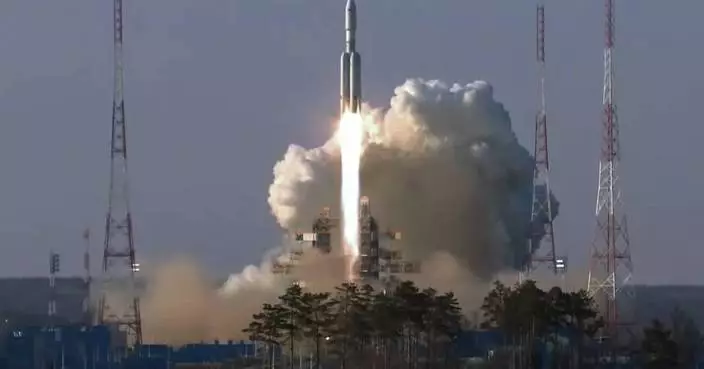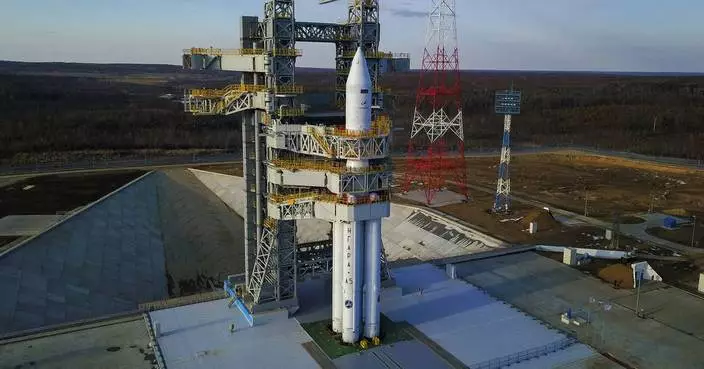A stash of frozen treats and other supplies rocketed toward the International Space Station on Sunday, this time from Virginia's cold eastern shore.
NASA's commercial shipper, Orbital ATK, launched the cargo ship just after sunrise from Wallops Island, aboard an unmanned Antares rocket.
Click to Gallery
A stash of frozen treats and other supplies rocketed toward the International Space Station on Sunday, this time from Virginia's cold eastern shore.
The rocket is carrying cargo to the International Space Station. (AP Photo/Steve Helber)
The Cygnus capsule should reach the orbiting lab Tuesday. It's loaded with 7,400 pounds of cargo, including sweet treats for the six station astronauts. There are frozen fruit bars, ice cream bars, ice cream sandwiches and cups of chocolate and vanilla ice cream — about 80 in all, according to NASA.
"Pizza and ice cream on the way!" NASA astronaut Joe Acaba tweeted following liftoff. "Eagerly awaiting the arrival."
Orbital ATK's Antares rocket sits on the 0A launch pad moments before a scheduled launch at the NASA Wallops Island flight facility in Wallops Island, Va., Saturday, Nov. 11, 2017. The launch of the rocket which is carrying cargo to the International Space Station was postponed due to aircraft in the area. (AP Photo/Steve Helber)
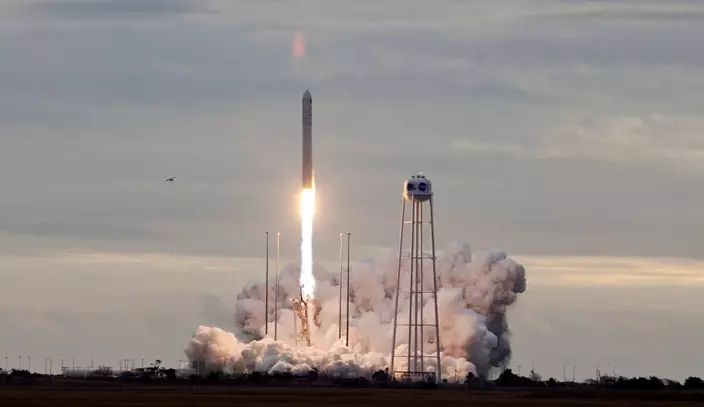
Orbital ATK's Antares rocket lifts off from Wallops Island, Va., Sunday, Nov. 12, 2017. The rocket is carrying cargo to the International Space Station. (AP Photo/Steve Helber)
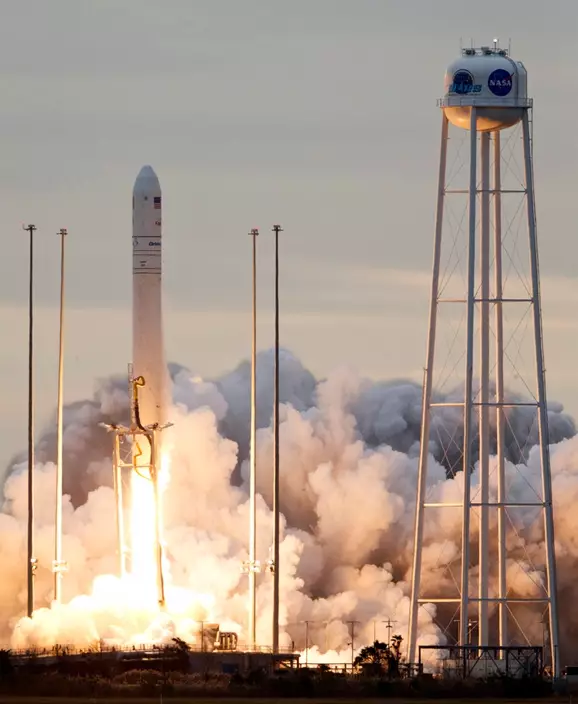
The rocket is carrying cargo to the International Space Station. (AP Photo/Steve Helber)
The Cygnus capsule should reach the orbiting lab Tuesday. It's loaded with 7,400 pounds of cargo, including sweet treats for the six station astronauts. There are frozen fruit bars, ice cream bars, ice cream sandwiches and cups of chocolate and vanilla ice cream — about 80 in all, according to NASA.
The crew expects pizza as well. Italian astronaut Paolo Nespoli has been craving pizza for months.
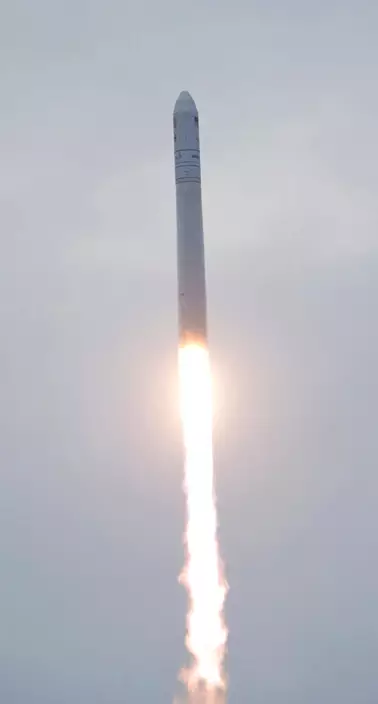
Orbital ATK's Antares rocket lifts off from NASA's Wallops Flight Facility in Wallops Island, Va., Sunday, Nov. 12, 2017. The rocket is carrying cargo to the International Space Station. (AP Photo/Steve Helber)
"Pizza and ice cream on the way!" NASA astronaut Joe Acaba tweeted following liftoff. "Eagerly awaiting the arrival."
This marked Orbital ATK's first launch from its home turf in more than a year. The last time it made a space station delivery, it used another company's rocket flying from Cape Canaveral, Florida.
Crowds gathered at Wallops in freezing temperatures and cheered as the rocket soared toward the southeast. Sunrise made it hard to see the launch farther afield. The field of visibility stretched from New England to the Carolinas.
A launch attempt on Saturday was nixed after a plane strayed into the restricted airspace. Sunday's try was almost foiled by a couple of boats that briefly wandered into the keep-out zone.

This photo provided by NASA shows the Orbital ATK Antares rocket, with the Cygnus spacecraft onboard, is seen on launch Pad-0A, Saturday, Nov. 11, 2017 at NASA's Wallops Flight Facility in Wallops Island, Va. The supply run to the International Space Station has been delayed a day by a stray plane which flew into the restricted airspace prompting NASA's commercial shipper, Orbital ATK, to call off the liftoff. (Bill Ingalls/NASA via AP)
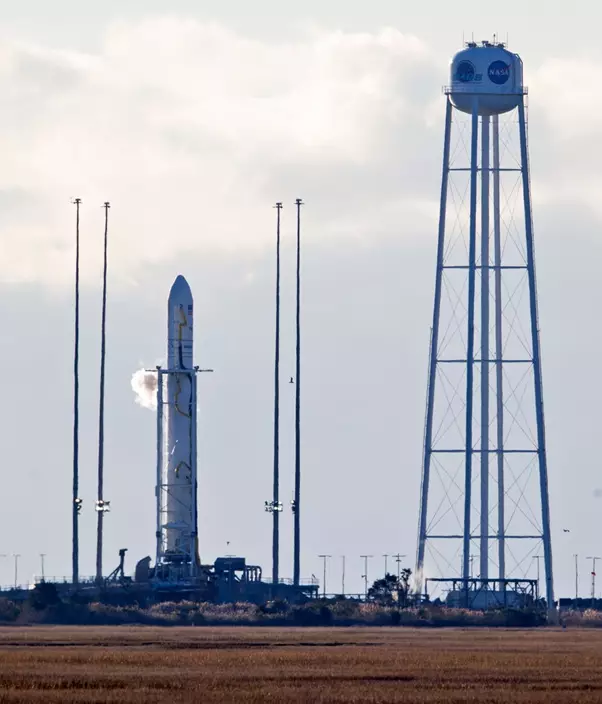
Orbital ATK's Antares rocket sits on the 0A launch pad moments before a scheduled launch at the NASA Wallops Island flight facility in Wallops Island, Va., Saturday, Nov. 11, 2017. The launch of the rocket which is carrying cargo to the International Space Station was postponed due to aircraft in the area. (AP Photo/Steve Helber)
Orbital ATK named the capsule after the last man to walk on the moon, Apollo 17's Gene Cernan, who died in January. During the final minutes of the countdown, a launch controller paid tribute to Cernan as well as J.R. Thompson, a high-ranking NASA and Orbital ATK official who died last week.
The capsule will remain at the space station until the beginning of December, when it's cut loose for a test of close proximity flying, a series of mini satellite deployments and, lastly, a fiery re-entry with a load of trash.
SpaceX is NASA's other prime supplier. It's next station delivery is next month.
SEOUL, South Korea (AP) — North Korean leader Kim Jong Un supervised salvo launches of the country’s “super-large” multiple rocket launchers that simulated a nuclear counterattack against enemy targets, state media said Tuesday, adding to tests and threats that have raised tensions in the region.
The report by North Korea’s official Korean Central News Agency came a day after the South Korean and Japanese militaries detected the North firing what they suspected were multiple short-range ballistic missiles from a region near its capital, Pyongyang, toward its eastern seas.
Analysts say North Korea’s large-sized artillery rockets blur the boundary between artillery systems and ballistic missiles because they can create their own thrust and are guided during delivery. The North has described some of these systems, including the 600mm multiple rocket launchers that were tested Monday, as capable of delivering tactical nuclear warheads.
KCNA said Monday’s launches represented the first demonstration of the country’s nuclear-weapons management and control system called “Haekbangashoe,” or “nuclear trigger.” The report described the drill as aimed at demonstrating the strength and diverse attack means of North Korea’s nuclear forces amid deepening tensions with the United States and South Korea, which it portrayed as “warmongers” raising tensions in the region with their combined military exercises.
State media photos showed at least four rockets being fired from launch vehicles as Kim watched from an observation post. It said the rockets flew 352 kilometers (218 miles) before accurately hitting an island target and that the drill verified the reliability of the “system of command, management, control and operation of the whole nuclear force.”
KCNA said Kim expressed satisfaction, saying that the multiple rocket launchers were as accurate as a “sniper’s rifle.”
He said the drill was crucial for “preparing our nuclear force to be able to rapidly and correctly carry out their important mission of deterring a war and taking the initiative in a war in any time and any sudden situation.” The comments reflected North Korea’s escalatory nuclear doctrine, which authorizes the military to launch preemptive nuclear strikes against enemies if it perceives the leadership as under threat.
South Korea’s Joint Chiefs of Staff said the weapons from Monday’s launches flew about 300 kilometers (185 miles) before crashing in the waters between the Korean Peninsula and Japan. The ranges suggested the weapons would likely target sites in South Korea. The latest launches came as South and the United States have been conducting a two-week combined aerial exercise that continues through Friday aimed at sharpening their response capabilities against North Korean threats.
When asked about the North Korean claims, Lee Sung Joon, spokesperson of South Korea’s Joint Chiefs of Staff, said it remains unclear whether the North perfected the designs for small, battlefield nuclear weapons that could fit on its rockets. He insisted the North was likely exaggerating the accuracy of its multiple rocket launcher systems and that South Korea would be able to detect and intercept such weapons, without elaborating on specific missile defense capabilities.
Lee said it was possible that the North used the drill to test the multiple rocket launchers it potentially plans to export to Russia as the countries expand their military cooperation in the face of separate, intensifying confrontations with the United States. The U.S. and South Korea have accused North Korea of transferring artillery shells, missiles and other munitions to Russia to help extend its warfighting in Ukraine.
North Korea in recent months has maintained an accelerated pace in weapons testing as it continues to expand its military capabilities while diplomacy with the United States and South Korea remained stalled. Outside officials and analysts say Kim’s goal is to eventually pressure the United States into accepting the idea of the North as a nuclear power and negotiating economic and security concessions from a position of strength.
In response to North Korea’s evolving nuclear threats, the United States and South Korea have been strengthening their bilateral military drills and trilateral exercises with Japan. The countries are also sharpening their nuclear deterrence strategies built around strategic U.S. assets.
In past years, North Korea has test-fired nuclear-capable missiles designed to strike sites in South Korea, Japan and the mainland U.S. Many experts say North Korea already possesses nuclear missiles that can reach all of South Korea and Japan, but it has yet to develop functioning intercontinental ballistic missiles that can travel to the continental U.S.
The latest launches came days after North Korea announced Saturday it tested a “super-large” cruise missile warhead and a new anti-aircraft missile in a western coastal area earlier last week. In early April, North Korea also test-launched what it called a solid-fuel intermediate-range missile with hypersonic warhead capabilities, a weapon that experts say is meant to attack remote targets in the U.S. Pacific territory of Guam and beyond. __ AP writer Hyung-jin Kim contributed to the report.
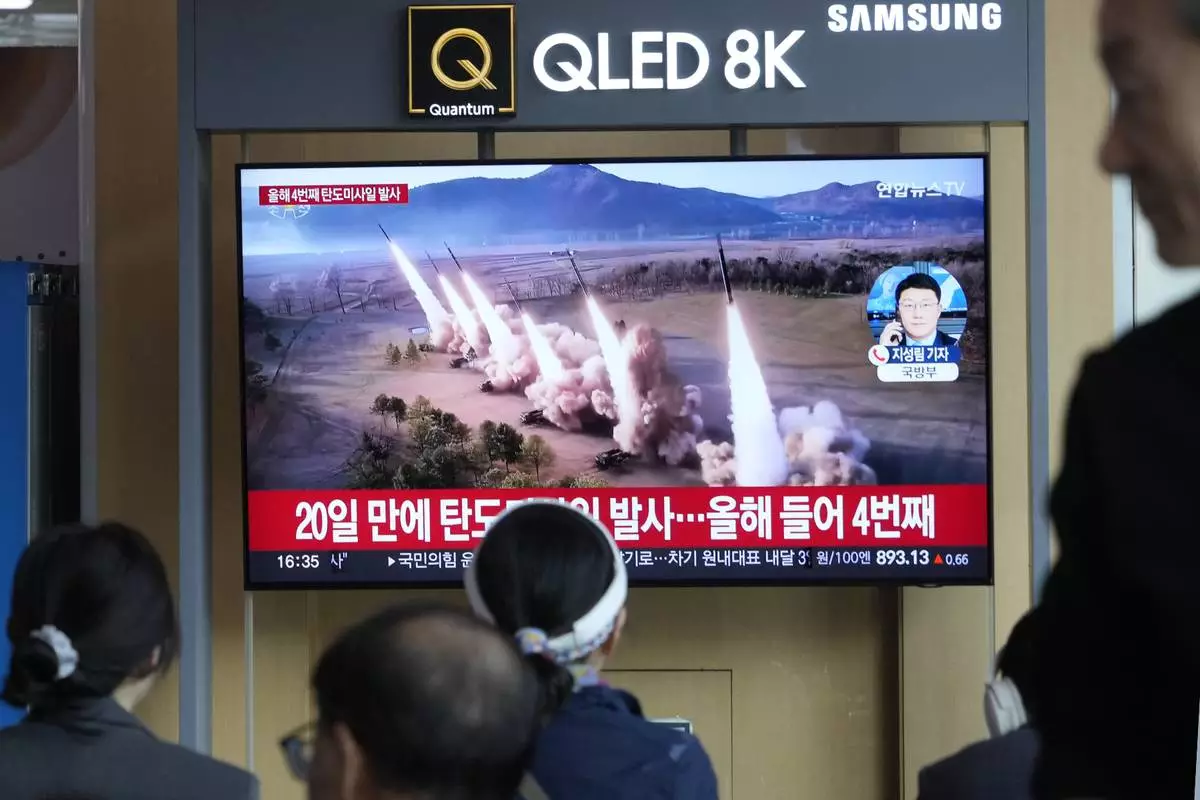
A TV screen shows a file image of North Korea's missiles launch during a news program at the Seoul Railway Station in Seoul, South Korea, Monday, April 22, 2024. North Korea fired multiple suspected short-range ballistic missiles toward its eastern waters on Monday, South Korea's military said, the latest in a recent series of weapons launches by the North. (AP Photo/Ahn Young-joon)
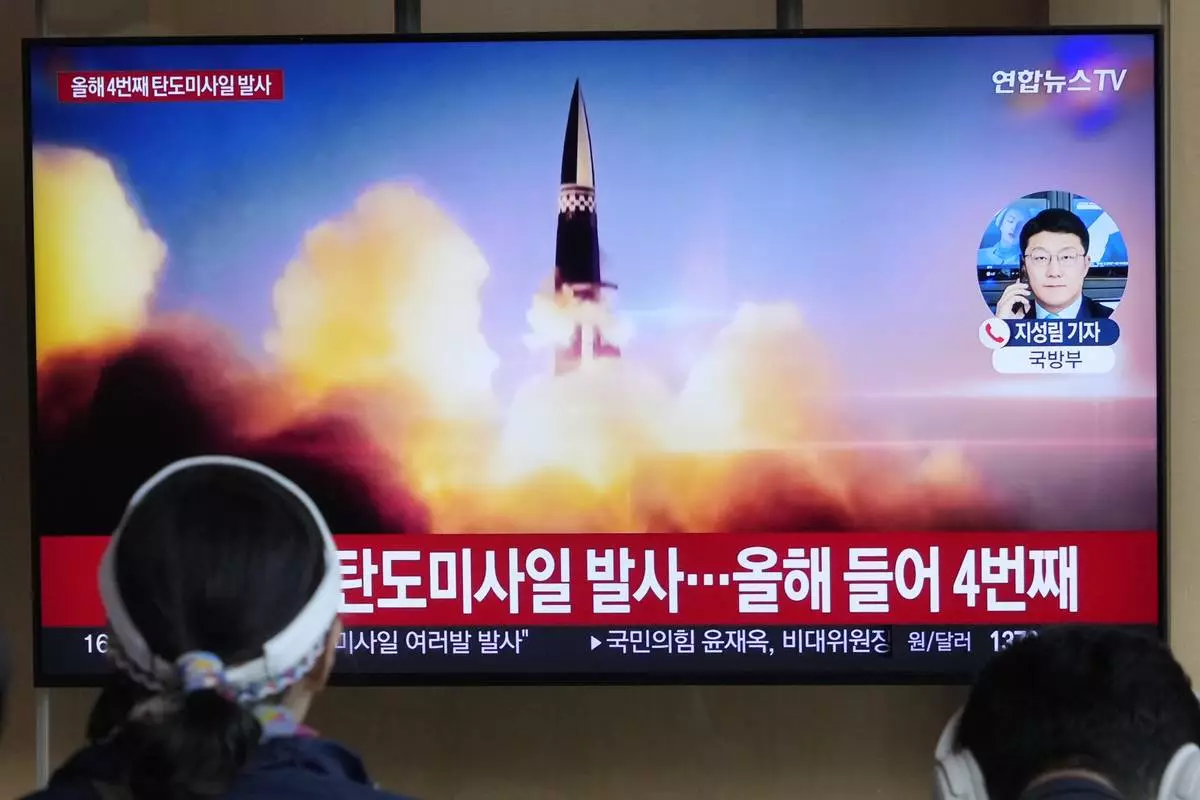
A TV screen shows a file image of North Korea's missile launch during a news program at the Seoul Railway Station in Seoul, South Korea, Monday, April 22, 2024. North Korea fired multiple suspected short-range ballistic missiles toward its eastern waters on Monday, South Korea's military said, the latest in a recent series of weapons launches by the North. (AP Photo/Ahn Young-joon)
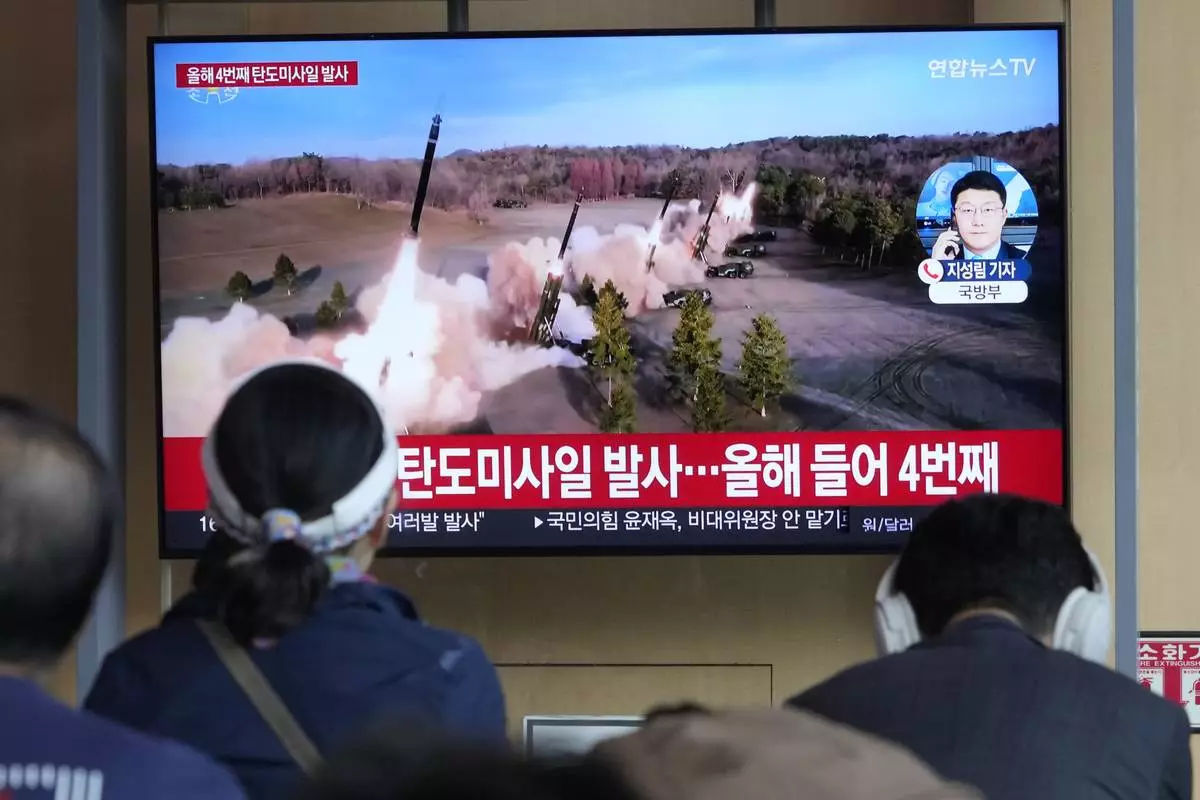
A TV screen shows a file image of North Korea's missiles launch during a news program at the Seoul Railway Station in Seoul, South Korea, Monday, April 22, 2024. North Korea fired multiple suspected short-range ballistic missiles toward its eastern waters on Monday, South Korea's military said, the latest in a recent series of weapons launches by the North. (AP Photo/Ahn Young-joon)
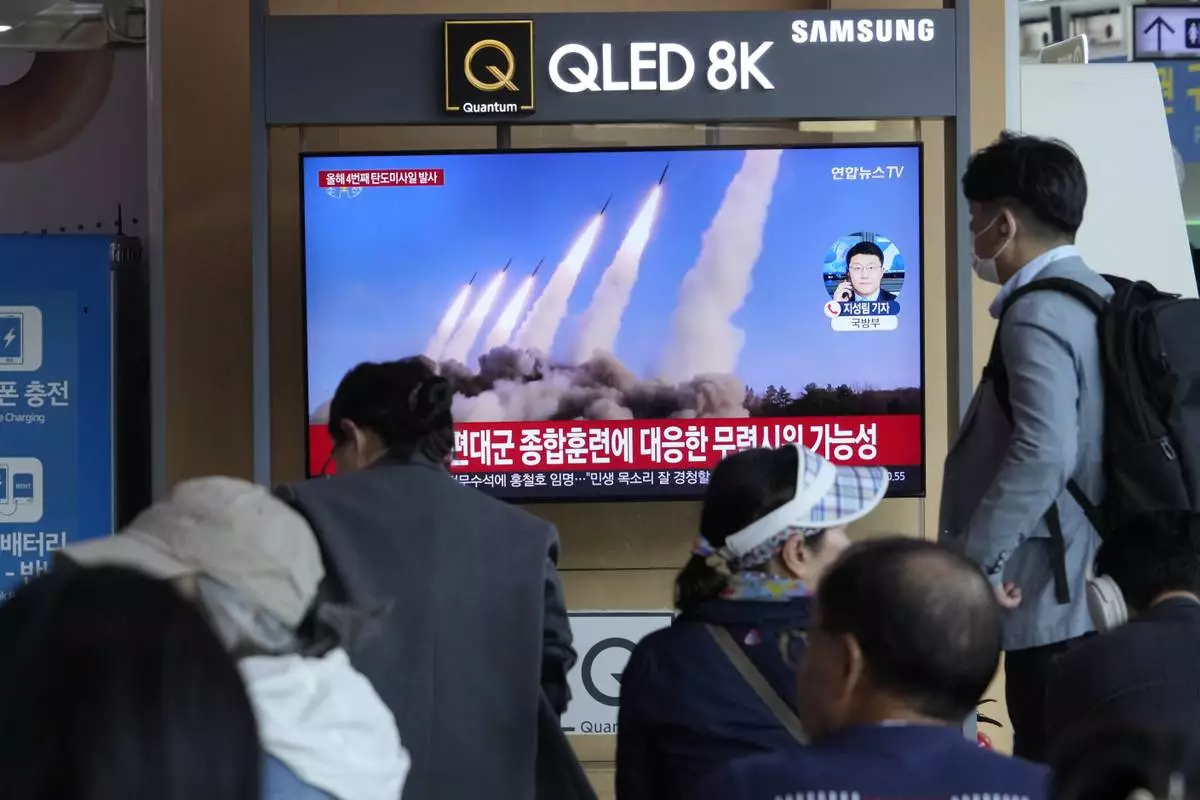
A TV screen shows a file image of North Korea's missiles launch during a news program at the Seoul Railway Station in Seoul, South Korea, Monday, April 22, 2024. North Korea fired multiple suspected short-range ballistic missiles toward its eastern waters on Monday, South Korea's military said, the latest in a recent series of weapons launches by the North. (AP Photo/Ahn Young-joon)
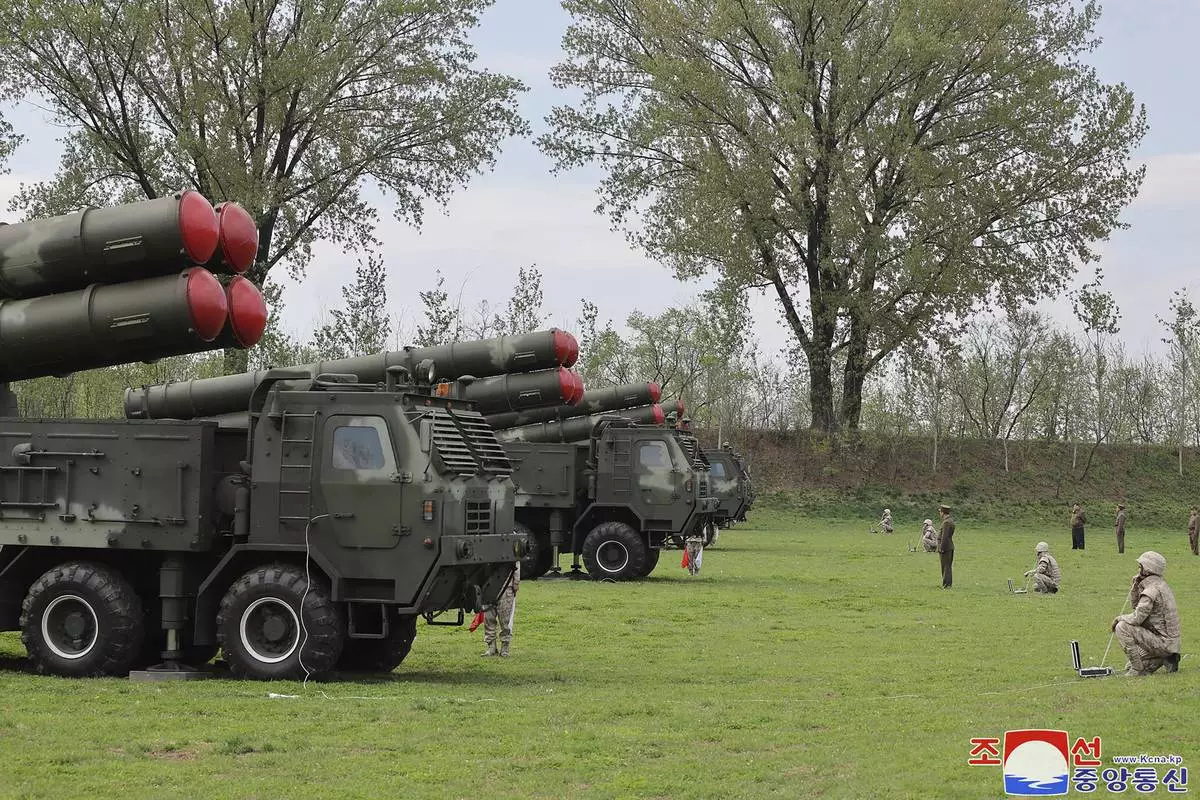
This photo provided by the North Korean government, shows what it says rocket drills that simulate a nuclear counterattack against enemies, at an undisclosed place in North Korea Monday, April 22, 2024. Independent journalists were not given access to cover the event depicted in this image distributed by the North Korean government. The content of this image is as provided and cannot be independently verified. Korean language watermark on image as provided by source reads: "KCNA" which is the abbreviation for Korean Central News Agency. (Korean Central News Agency/Korea News Service via AP)
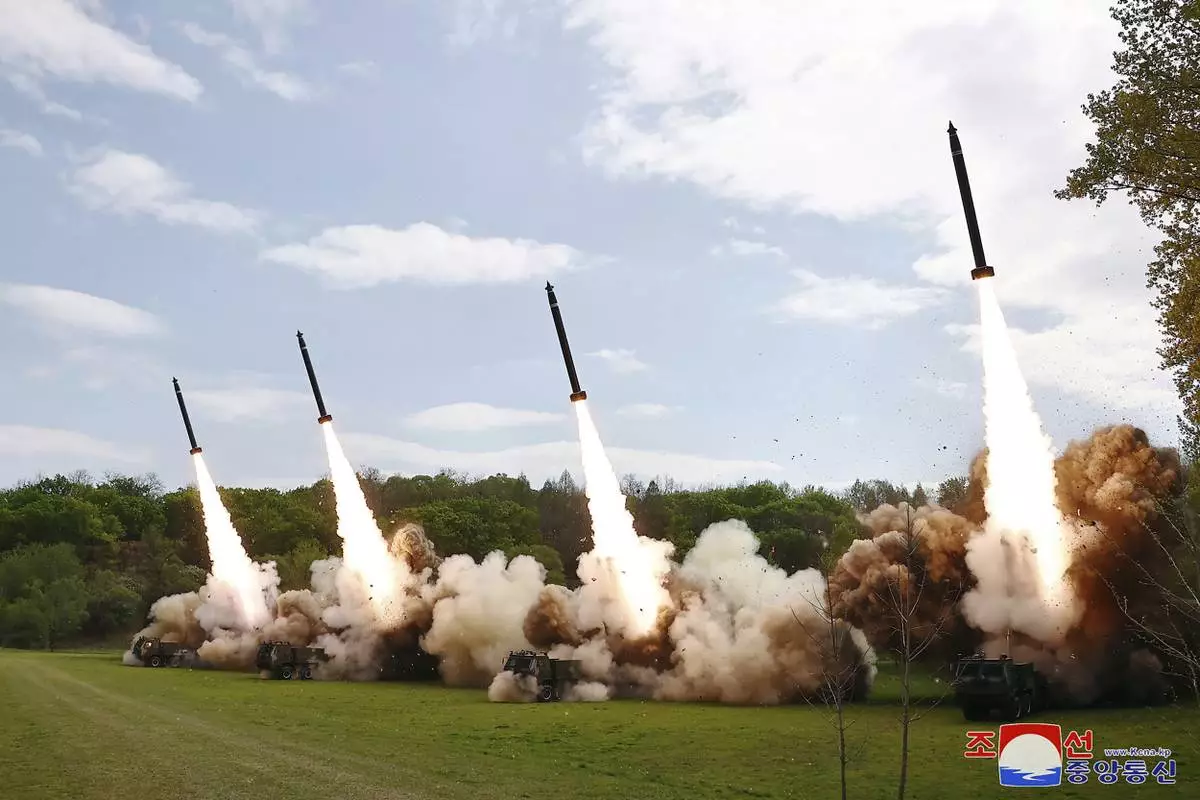
This photo provided by the North Korean government, shows what it says rocket drills that simulate a nuclear counterattack against enemies, at an undisclosed place in North Korea Monday, April 22, 2024. Independent journalists were not given access to cover the event depicted in this image distributed by the North Korean government. The content of this image is as provided and cannot be independently verified. Korean language watermark on image as provided by source reads: "KCNA" which is the abbreviation for Korean Central News Agency. (Korean Central News Agency/Korea News Service via AP)

In this photo provided by the North Korean government, North Korean leader Kim Jong Un, right, supervises a drill at an undisclosed place in North Korea Monday, April 22, 2024. Independent journalists were not given access to cover the event depicted in this image distributed by the North Korean government. The content of this image is as provided and cannot be independently verified. Korean language watermark on image as provided by source reads: "KCNA" which is the abbreviation for Korean Central News Agency. (Korean Central News Agency/Korea News Service via AP)















